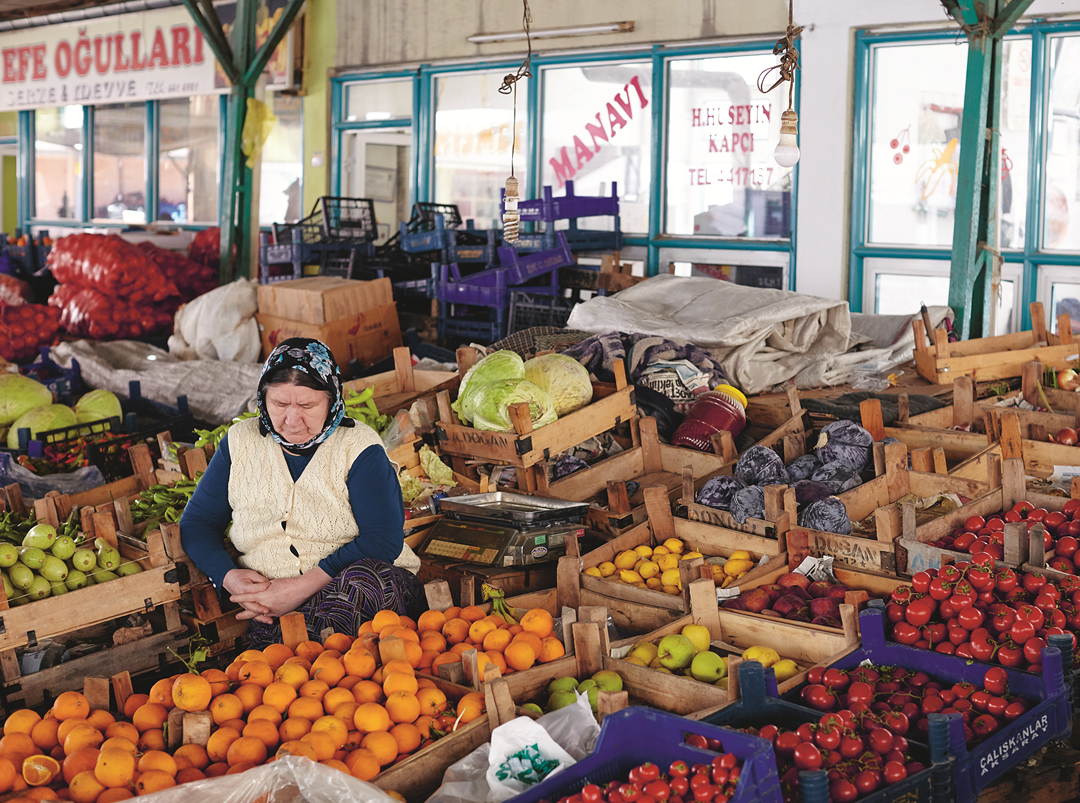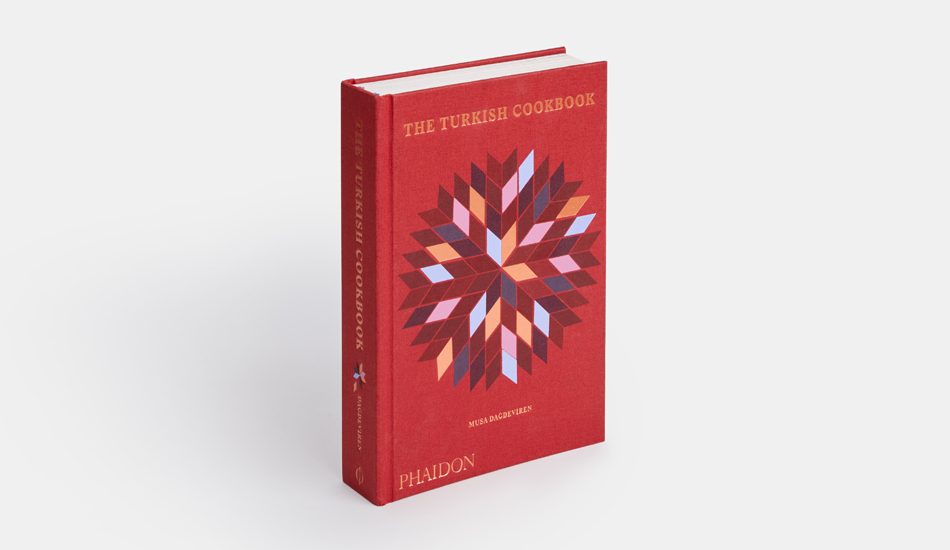
delete
The author of The Turkish cookbook understands his country's regions and divisions, and sometimes ignores them
While some chefs seek to update and revitalize their national cuisine, the Turkish chef and restaurateur Musa Dağdeviren simply seeks to record and preserve his country’s culinary culture.
To an outsider, that might sounds slightly ambitious, but as Dağdeviren explains in the introduction to The Turkish Cookbook, Turkey’s food is about as diverse and detailed as any nation on earth; and, while some of those details should be celebrated, some of the divisions should be ignored.
“Turkey is a multi-religious, multicultural society," the chef and author writes. "Different cultures have their own traditions. The Ramadan festival and the Festival of the Sacrifice in Muslims, peace rituals, prayers for rain, Hıdrellez and sacred months like Ramadan and Muharrem have enriched our culinary culture Çöreks, kandil simidi, helva and aşure are good examples. Armenians, Rum (Ottoman Greeks), Assyrians and other Christians make special brioches and red eggs to celebrate Easter. They share these delicacies with all their friends and neighbours regardless of their religion.
“Nevertheless, tThe world is an open table, we should enjoy it instead of focusing on how to separate flavours and faiths. Instead of praising the Armenians for their skill in olive oil dishes, the Kurds for meat, Turks for pastries, Ottoman Greeks for their seafood, we could coexist, with mutual respect to each other’s values, faiths and way of life.
“Religious rules and regulations differentiate food culture. However, these religious rules have been shaped within the common cultural contexts of our geography. For example, Muslims and Christians who live near each other generally make and eat the same foods, with minor differences attributable to religious dietary rules. The food eaten by a Christian living in Gaziantep is the same as that eaten by a Muslim in Gaziantep. Similarly a Muslim and Christian in Cappadocia eat the same food. So linking a dish strictly to a religious identity can also be troublesome. It is worth noting that Topik a typical Armenian dish skilfully prepared in İstanbul, might be unknown to Anatolian Armenians.
“Charity is a crucial component of our culture. All charitable work is to be done quietly. We have many proverbs reflecting the importance of food in our social interactions. ‘A cup of coffee goes for forty years,’ and ‘That who goes to bed full while his neighbour is hungry, is not one of us’ are some examples. The needy are quietly taken care of and protected by those better off. There is a tradition of solidarity, cooperation and peace. There is a strong bond between our culinary culture and traditions. Food is the key to the soul of a society.
“Getting to know different cuisines and enabling their interaction with one another is extremely valuable. Milestones in one’s life like birth, death and marriage are all marked with food rituals. There is a dinner organised at a bride’s family home just before she gets married, to symbolise that she has her destiny in her own hands. If a woman craves a specific food during pregnancy, she absolutely has to have it. otherwise a mark will appear on her baby’s body. Young mothers are nurtured with Kaynar (Spiced Herbal Tea), which is also applied to her belly, then washed off. Visitors are offered sherbet and sweet kuymak (cheese fondue), served warm or cold depending on the season. Hedik (Whole Wheat Stew) is made of boiled wheat to celebrate the first baby tooth and comes with its own ritual. The first step of a baby is called köstek. The toes of the baby are tied together with thread, and sweets and snacks are placed around him. Local children form two teams and run a race. The winner of the race cuts the thread and lifts the baby onto his feet. He is also the winner of the presents!
“Keşkek (Pounded Lamb and Wheat) is traditional wedding food. In Nizip, a new groom is taken to the Turkish bath early in the morning of the wedding. They all have kebabs later. The groom has some spleen and küşneme to take to the bride. Family and neighbours provide the food when someone dies. Helva (Halva) is made in the hope that the aroma brings peace to the soul of the dearly departed.
“Relatives on my father’s side were farmers and on my mother’s side bakers. My father looked after pistachio, olive and fruit trees. I still remember the wild honey I tasted in a pistachio orchard. My father was my master of all things rural from pistachios to olives, olive oil and fresh cheeses.
“My elder brothers and I are restaurateurs with a baking background. In Nizip, Gaziantep, where I am from, food meant everything to us. The ridged bread, various pides and börek were prepared at bakeries. The locals made trays of food at home and sent them off to local bakeries for a final taste test and baking. The filling for Lahmacun (Spiced Meat-Topped Flatbread) was made at the butcher and then sent, along with other meat, to the local bakery for cooking, eaten with fresh flatbreads and pide. There used to be many street vendors who cooked chickpeas in bone broth and pulled their carts in front of bakeries for hungry aficionados in the early morning. The bakers knew who were the best cooks in Nizip. They got cross if they were not offered a piece of the food they baked for others.
“The baker, butcher, greengrocer, kebab shop and pastry shop were all in the same area in Nizip. They somehow had a lot to do with one another. What is called ridged bread in urban areas was our staple. We always had it fresh. Sugar, sesame seeds, cartilage and lamb confit from the homes were added to this bread and turned into delicious pide. The fresh pide are dipped into olive oil and eaten with milk for breakfast. Fresh cheese is made of sheep’s milk at the beginning of spring and eaten with the pide.
“During primary school we used to compare our mothers’ food. Every mother had a special dish she made really well. I have always been interested in ingredients and cooking techniques. This curiosity eventually led me into my research and field work on the relationship between food and folklore. Discovering sources about our culinary history put things into a historical perspective, more of a continuum. My mother has been my inspiration and I still love to learn.
“I came to İstanbul in 1979 to work at my uncle Ismet’s restaurant. The meze, grilled dishes and fish fired my enthusiasm and broadened my horizons. I learnt about the restaurant trade at places run by my older brothers and uncles. In the 1980s we cooked with diverse ingredients, most locally produced.
“Street vendors and restaurants contributed to a vibrant and authentic food scene which is sadly no longer here because of wider access to mass-produced foods. The local food culture that was dominant in Nizip in my childhood has long been replaced by restaurant food. Restaurants do serve local specialties like ridged bread, pide, lahmacun, sheep’s head and trotters soup, lentil soup, karnıyarık and moussaka. More efficient communication and urbanisation have unfortunately taken place at the expense of local cuisines.
“I worked at several restaurants and did a fair bit of field work before opening a tiny restaurant with four friends in 1986. This six-table diner eventually turned into Ciya and I eventually became the sole owner. This boutique hole-in-the-wall is still remembered with affection by aficionados. I would take orders for special dishes and cook them for the patrons who enjoyed them accompanied by classical music. A woman among our regulars made a comment about the name of the İcli köfte (Kibbeh) in the menu. She claimed it was called ‘oruk’. I immediately knew she was from Antakya since this is the local name for kibbeh. That is how I met my wife Zeynep!
“In 1998 we opened Ciya Sofrası, on the same street but with a new concept. Ciya Sofrası has always been known as a destination for the lesser-known cuisines of Southeastern Anatolia and Eastern Mediterranean. It encompasses a larger area from Mesopotamia to Anatolia featuring Azeri, Georgian, Turkish, Arabic, Armenian, Kurdish, Rum, Assyrian, Laz, Circassian and Sephardic dishes. In 2001 we opened a bigger kebab restaurant on the same street. We now also have our own farm to supply our restaurants with the freshest produce. We make our own pickles, grow our own fruit and vegetables and make our own tomato and red bell pepper pastes with the ingredients we grow ourselves.
“I have also been sharing my knowledge about Turkish culinary culture in high schools, universities and local councils both in Turkey and internationally. Since 2005 I have been publishing Yemek ve Kültür (Food and Culture) with an editorial board of academics covering the history, literature, etymology and folklore of food. Ciya Yayınları is a specialised publishing house focusing on documenting food history. The Ciya Foundation carries out research on our culinary culture and aims to compile a food dictionary of our country and document food culture.

“I have long been thinking about an extensive book about Turkish food. When Phaidon approached me about this project, I relished the opportunity to write for an international audience. Choosing the recipes was the hardest part. I included food rituals and folklore as well as the original names of some dishes. This is why some recipes have a second name in parentheses. This is only a glimpse of Turkish cuisine. Fieldwork was the most fun part. I visited people in their kitchens and made them food, while they cooked for me in return.”
For more on this holistic view of Turkey’s culinary heritage, and to learn how to make many of the dishes mentioned, order a copy of The Turkish Cookbook here.